Helen Lowe's Blog, page 288
August 16, 2011
Six Great Non-Human Heroes of SFF
Well, here it is at last—the final instalment of my "heroes" series (using "heroes" in the strictly non gender specific sense at this point.  ) The series began on May 27 with "Six Great Heroines of SFF: Part One" and continued with the first instalment of "Six Great Heroes" on July 8. But I always promised that I'd consider "Six Great Non-Human Heroes", as well, and now the time has come …
) The series began on May 27 with "Six Great Heroines of SFF: Part One" and continued with the first instalment of "Six Great Heroes" on July 8. But I always promised that I'd consider "Six Great Non-Human Heroes", as well, and now the time has come …
But you know what—there are so many of them! I had a really hard job narrowing my list to just six. So in the end, I had to have a few additional criteria to help winnow the contenders out. One of the most important ones was that the non-human heroes couldn't be "humanoid"—which ruled out characters like Athaclena from David Brin's The Uplift War. But fear not, David Brin fans, there was already another Brin character in the mix …
Once again, as with the previous two instalments in this series, I have restricted the list to characters drawn from books, not film or tv (which I suspect would have blown my longlist completely out of the water!) So onward—here are the first three of my "Six Great Non-Human Heroes of SFF"
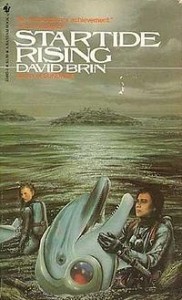 C is for Creideiki from David Brin's Startide Rising.
C is for Creideiki from David Brin's Startide Rising.
Creideiki is the dolphin captain of the Terran spaceship Streaker, in a future where humans are constantly skirmishing to maintain their independence in a far-from-friendly alien universe—and where dolphins and chimpanzees have been "uplifted" to sentience.
The crew of the Streaker is predominantly dolphin, with one chimpanzee and a handful of humans amongst its complement. Creideiki is an experienced spacer, but Streaker is the first expedition captained and predominantly crewed by dolphins. When the story opens they are fleeing for their lives, having made a discovery of galactic significance.
I liked Creideiki from the beginning because he is what the jager-monsters in Girl Genius would describe as a "schmott guy." At the point the story opens, he has managed, despite almost overwhelming odds, to outsmart the pursuing alien fleets and keep his ship and crew free. So Creideiki is a leader who performs under pressure, but he is also a thinker and a philosopher, pursuing keneenk, a hybrid style of reasoning that combines human logic and cetacean philosophy.
Yet as the story starts, Creideiki faces not only danger from without, but mutiny from within his crew as some of the uplifted dolphins revert to animalism under the psychological stress of their plight. The mutiny results in an attack on Creideiki and brain injury that seems irrecoverable.
One of the risks of having lead animal and alien characters is that they are essentially anthropomorphic, human in all but outward form. Yet the aspect of Creideiki I liked most is that the way in which he forces himself to recover from his injury draws exclusively on his dolphin heritage—in contrast to the reversion to animalism of some of his crew. So he is a brave, smart, and resilient character, but also interesting and credible as a non-human protagonist.
Besides, as several people pointed out when I talked about writing this post: Creideiki is cool, end of story.
—
[image error]H is for The House in Scott Westerfeld's The Risen Empire duology
Scott Westerfeld is probably better known for his YA writing, but I very much enjoyed his recent Risen Empire space opera (published as two books under the one title here, but as the Succession series in the US, I believe.) And The House was probably my favourite character in both books (which are really one story told in two parts.) In a space empire of nanotechnology and AIs, this particularly house, built as a holiday retreat for a senator, is accidentally seeded with more artifical intelligence than such constructs are supposed to have. Throughout the book it quietly builds–and then enhances–itself and in the final part of the story has a vital, and for many people within the empire, startling part to play …
To say any more would be a spoiler, but I loved the House's quiet self-sufficiency and also its humour—not to mention its willingness to 'come to the party' when the chips are down. Definitely a favourite non-human character in my SFF pantheon.
—
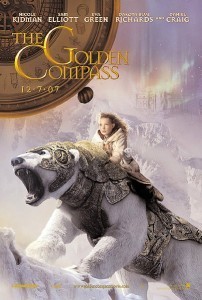 I is for Iorek Byrnison in Philip Pullman's Northern Lights (UK)/The Golden Compass (US)
I is for Iorek Byrnison in Philip Pullman's Northern Lights (UK)/The Golden Compass (US)
Sometimes a book comes along that just seizes your imagination and for me, Philip Pullman's Northern Lights/The Golden Compass was one of those books. I just loved it—and there was no character in it that I loved more than Iorek Byrnison, the panzer-bjorn, i.e. an armour-wearing polar bear. Sentient, armour-wearing polar bear, I hasten to add. Although at first I wasn't entirely sure of the sentience: surly but perhaps limited, was what I initially thought when Iorek entered the story—but the character definitely grew.
And that's the point. When the reader first meets Iorek he is on the skids and in a very bearish way. But through his interaction with Lyra Belacqua and other key characters in the story, such as the aeronaut, Lee Scoresby, Iorek recovers both his armour—vital to the psyche of a panzer-bjorn–and his sense of self. He remains savage—the panzer-bjorn are mercenaries, after all—but loyal in his friednship to Lyra, despite considerable personal risk to himself.
Iorek Byrnison is a great character, but he would have had to be on the list anyway. I mean, an intelligent, armour wearing bear—how cool is that?!
—
I'll be back on Friday with the second half of my "Six Great Non-Human Heroes of SFF." But in the meantime, who are your favourite non-human characters? And why?
—
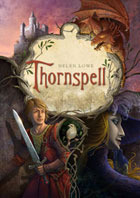 And don't forget, tomorrow is Fun With Thornspell day! There have already been some great character comments suggested here and here, but do keep them coming! The judges are keen to have a really great selection to work through.
And don't forget, tomorrow is Fun With Thornspell day! There have already been some great character comments suggested here and here, but do keep them coming! The judges are keen to have a really great selection to work through. 
August 15, 2011
Tuesday Poem: "Snow Country"

Under snow ...
Being
in snow country,
grey sky pressing in
as the flakes swirl – touch
chill fingers
against the face, drift
onto grey-green sea
and vanish …
… a shag arrows
across the harbour, straight
into the southerly blast:
living, dying,
being …
… in snow country.
.
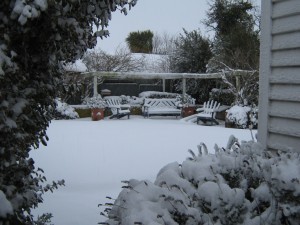
The backyard, too ...
(c) Helen Lowe
—
This is an old poem, first written when I lived at Portobello, on Otago Peninsular—but reworked yesterday because we, like much of the country, were in snow country. And here's some photos, too …
—
To read the featured poem on the Tuesday Poem Hub and other great poems from fellow Tuesday poets around the world, click here or on the Quill icon in the sidebar.
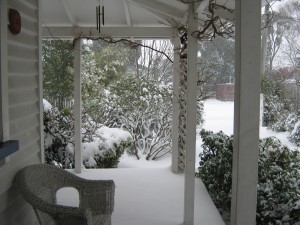
... and blown into the verandah
—
And this month's " … on Anything, Really" feature is "Fun With Thornspell." You can find out more here and here.
August 14, 2011
What I'm Reading: "Graveminder" by Melissa Marr
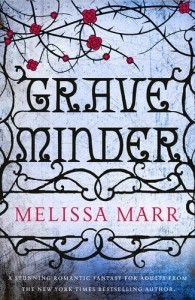 A few years back, I picked up a novel called Wicked Lovely by then new author, Melissa Marr—and was quickly drawn into the world the author created at the interface between our urban, everyday reality and that of fairy. I'm not talking pretty little creatures with wings here (although some fairies in the story did present that way), but something far more primeval and dangerous …
A few years back, I picked up a novel called Wicked Lovely by then new author, Melissa Marr—and was quickly drawn into the world the author created at the interface between our urban, everyday reality and that of fairy. I'm not talking pretty little creatures with wings here (although some fairies in the story did present that way), but something far more primeval and dangerous …
Since then, Melissa Marr has returned to that same world with four further, highly successful YA novels—but Graveminder is her first adult novel.
Set in the small, rural American town of Claysville, this new setting feels just as real as the world created in Wicked Lovely—and the story was as quick to create tension as the world was to lure me in. The reader is introduced to the character of Maylene Barrow in the prologue, only to learn in the first chapter that she has died under violent and mysterious circumstances. The exact nature of those circumstances is something that Rebekkah Barrow, Maylene's granddaughter, and Byron Montgomery, the town undertaker, must then unravel.
The back cover promises that Graveminder is "a captivating story of the living, the dead, and a curse that binds," a promise that the story proceeds to keep. But Graveminder is also a mystery, and a tale of the overlap between worlds, as well as a story about the relationships within family, and the relationship between Rebekkah and Byron—one that must find both a personal equilibrium and a balance that will sustain the wider community.
I think I've now given away that there is a lot to this story in terms of plot and that Melissa Marr has once again created two convincing, and compelling, overlapping worlds. I really enjoyed the alternate world that Rebekkah and Byron must discover and deal with, more even than I enjoyed the faerie realm of Wicked Lovely. This new realm is really interesting, with layers that gave me the sense of more to come, but without any sense that this book is incomplete. The alternate realm also contains Charlie and Alicia, who I found the two most intriguing characters in the book, both because of the part they play in the Graveminder story, but also because of the backstory that is revealed as the book progresses—and again with that sense, in a good way, that there is more yet to play out.
I also enjoyed the exploration of the relationship between Rebekkah and Byron, although I did feel it was their interactions with Charlie and Alicia, and the secondary plotline that evolved around the character of the "hungry ghost", Daisha, that gave the story much of its "oomph."
So what didn't I enjoy so much? One quibble—trying to avoid spoilers here—is that Maylene and Byron's father held information that it was vital for Rebekkah and Byron to know, both for their own safety and wellbeing, and that of the town. Yet it is an essential plot premise that Maylene has withheld this information. Consequently, Rebekkah and Byron are forced to find it out, in difficult and dangerous circumstances, after her death. Maylene does have a rationale for her decision, but given how absolutely vital the withheld knowledge is to both Rebekkah and the community's safety—well, I just wasn't sure that I fully "bought" the premise, as a reader.
My second concern is very subjective, but there was a retributive, 'eye for an eye' element to the resolution of the story that I did not feel comfortable with–the implication being, I suppose, that if people are bad and do bad things, it's by implication ok for bad things to be done to them in their turn. But I am not at all sure that it is, especially if the bad things are not inadvertent but allowed to happen by the central protagonists. So this particular aspect of the story did not work so well for me, for this reason.
Overall though, this is a strong story that not only seized my attention at the beginning, but kept me turning the pages throughout. I think it may even be the Melissa Marr novel that I have enjoyed most to date—and with its blend of everyday realism with the supernatural, murder and mystery and romance, I think it will appeal to a great many readers.
August 13, 2011
Another Peek Inside Tales for Canterbury: "Eggs for Dinner" by Jay Lake
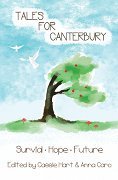 Yes, It's time for another "peek inside" Tales for Canterbury, this time with a look at Jay Lake's Eggs for Dinner—and again, this story is from the "Hope" segment of the anthology, which is themed around "Survival", "Hope" and "Future."
Yes, It's time for another "peek inside" Tales for Canterbury, this time with a look at Jay Lake's Eggs for Dinner—and again, this story is from the "Hope" segment of the anthology, which is themed around "Survival", "Hope" and "Future."
Jay Lake is one of the international writers who generously contributed to Tales for Canterbury following the February 22nd Christchurch earthquake. Eggs for Dinner is one of the longer stories in the anthology and in many ways presents as convincing contemporary realism—but once you get into the tale the Fantasy element is definitely there. I liked it a lot, particularly the development of the central characters.
.
Eggs for Dinner
by Jay Lake
Courtney's life had changed over the years, though never for the better.
Her father left for overseas when she was eight. "Oil," Mom always said in the years since, but oil came from the earth everywhere – Alaska, the Middle East, Texas – sucked up by pumps like giant mantises praying to the sun-burned grass. Dad left, and only his postcards came back from foreign parts.
After a while even the postcards stopped.
Much later, as Courtney was starting high school, her Grandmother McCandless came to stay. Mom needed to go spend a long time in a cuckoo hospital, talking to doctors about oil and Courtney's father. Grams didn't hold with doctors, or much else, but Courtney had nowhere to go. So she ate the same burnt-edged eggs every morning, rode the same bus to school every day, and came home to the same homework and prayers every night, wondering if life would ever get better.
Or when she could run away, too. She would escape, but like her father – free – not like her mother, wandering into crazy. Like him, Courtney would go over the seas, live her life on the water she'd never yet seen.
When Mom finally did return, she was different. Like a postcard of herself, sent in reminder from a distant country.
—
You can find out how things work out for Courtney by reading the rest of Jay Lake's Eggs for Dinner in Tales for Canterbury. The Tales for Canterbury anthology of short fiction was put together by Cassie Hart and Anna Caro as a fundraiser for the Red Cross Christchurch Earthquake Appeal. The anthology includes a range of short stories donated by both national and international authors and may be purchased from Random Static here.
—
And this month's " … on Anything, Really" feature is "Fun With Thornspell"—you can find out more here and here.
August 12, 2011
It's Official: News from the UK
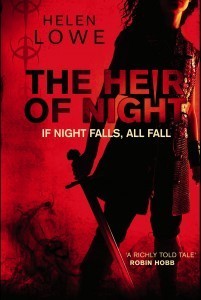 No, nothing at all to do with riots, although it is hard to focus on 'other stuff' at present.
No, nothing at all to do with riots, although it is hard to focus on 'other stuff' at present.
But like any good author, I can always focus on 'me books.' 
I have known for some time that the US launch date for The Gathering of the Lost, The Wall of Night Book Two, was set down for March 2012–but it's now official, March is the UK/Australia/New Zealand launch date as well!
In addition, the mass market edition of The Heir of Night (The Wall of Night Book One  ) will be released in the UK/AU/NZ a month earlier, in February 2012—and there is talk of a new cover for the mass market edition as well, which is ve-ry exciting news. (Although I still love the red cover a LOT—but new covers are one of the most exciting parts of seeing a book come out and this one will tie in with the launch of Gathering, as well, so I can't help but look forward to it all!) I am not sure when I will be able to do the big reveal on the mass market cover, but watch this space—because as soon as I can share it with you, I will!
) will be released in the UK/AU/NZ a month earlier, in February 2012—and there is talk of a new cover for the mass market edition as well, which is ve-ry exciting news. (Although I still love the red cover a LOT—but new covers are one of the most exciting parts of seeing a book come out and this one will tie in with the launch of Gathering, as well, so I can't help but look forward to it all!) I am not sure when I will be able to do the big reveal on the mass market cover, but watch this space—because as soon as I can share it with you, I will!
—
This month's " … on Anything, Really" feature is "Fun With Thornspell"—you can find out more here and here.
August 11, 2011
The Arthouse Presents "En Masse", with Claire Beynon
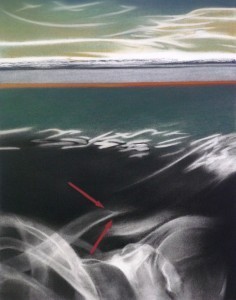
'I meant it to be a poem about sparrows'
After a year of earthquakes and consequent aftermath grunge it is quite wonderful to be having exhibitions again.
So I am thrilled that En Masse, the first public exhibition by The Arthouse, will be opening this evening—the event begins at 5.30 pm, at 215 Woolridge Road, Harewood. (Please also refer to the map below this post.)
En Masse features new work from 16 of The Arthouse's regular artists, including my friend and fellow Tuesday Poet, Claire Beynon from Dunedin. To find out more about Claire and her art, you can check out her blog, '… all finite things reveal infinitude …'.
But there is more.
On August 2, I posted The Sparrows, a poem in my Earthquake Witness sequence as my Tuesday poem. Claire was " … already busy with a piece that has this atmosphere/bird-sky imagery in it" and asked to " … make a painting prompted by the last two lines."
The painting, which is the one featured above, ended being inspired by the first two lines (the painting around the last two lines may come later, Claire tells me) of The Sparrows and will be in the exhibition. And the full text of The Sparrows will be featured alongside the painting. I am very moved that the poem has "spoken" to Claire in such a profound way and am very much looking forward to every aspect of this evening: the En Masse exhibition, seeing Claire, and also seeing her wonderful artwork and my poem featured together.
And if any of you are in Christchurch and can make it along, that would be fabulous. Come over and say hello, too. 
—
Just as a bit more background, The Arthouse used to be located next door to the Christchurch Art Gallery (which is currently still being used as a base of operations by the Christchurch Earthquake Recovery Authority and the Christchurch City Council) in a very new building that survived September 4 but was rendered unusable by the February 22nd earthquake and may well be demolished. But like a great many enterprises in Christchurch, The Arthouse is refusing to be 'down and done for.' It is currently operating online and En Masse is just the first in a series of "pop up" exhibitions in real—as opposed to cyber—space to be developed over the next few months.
Just another sterling reason to support this exhibition—it's all about getting our city back to the great living and cultural place it is meant to be.
—

The arrow marks 215 Woolridge Rd
And here's the map, so you know exactly where 215 Woolridge Road, Harewood is—and remember, the official opening is at 5.30 pm today, Friday 12.
.
—
.
This month's " … on Anything, Really" feature is "Fun With Thornspell"—you can find out more here and here.
August 10, 2011
"Fun with Thornspell": Introducing the Judges, Plus …
This is the second week of the Fun with Thornspell feature here on the blog—in which you tell me which character in Thornspell you would like a short story written about, and why, and I talk about the book from my perspective as the author.
And at the end of the month our three judges will decide which character, from amongst the suggestions you've put forward, I will get to write a short story about—to be published here on the blog with a dedication to the selected commenter.
[I will set out the full details again below this post, or alternatively, you can go to my original post from last week, here.]
But given they have such an important part to play, the first thing to do today is introduce the judges.
Introducing the Judges (in alphabetical order by first name):

Beth
Beth Miller: Beth Miller works at Writers House Literary Agency in New York, where she is the assistant to my agent, Robin Rue—and as such was amongst the first people out there to read and love Thornspell. She is also a writer in her own right; her first novel, Into the Scottish Mist, was published by Wild Rose Press in 2010 and you can read my interview with her here.
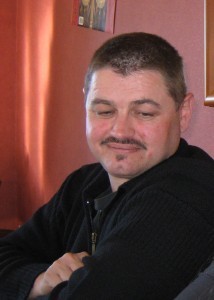
Fitz
Peter Fitzpatrick (Fitz): Fitz was another early reader of Thornspell and has been an integral part of my writing journey since he has designed both my Helen Lowe and Thornspell websites, as well as designing the map for The Wall of Night series—for which he was nominated for a Sir Julius Vogel Award for Best Professional Artwork earlier in the year.
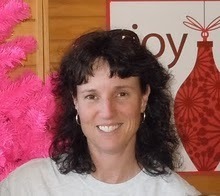
Sharon
Sharon Stogner: Sharon is an avid reader, follower of a number of blogs such as the Supernatural Underground, and a book blogger herself on the ismellsheep book and movie site. (And in fact it's "SwagDay" right now on ismellsheep so head on over and check it out if you're interested in trying new authors in the paranormal genre.) She was also an early enthusiast for both The Heir of Night and Thornspell.
So a very warm welcome to our three Fun With Thornspell judges!
About Thornspell: The Belvedere
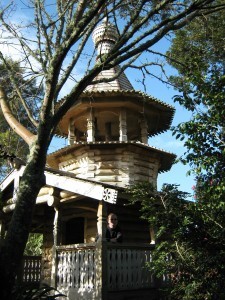
The Russian belltower, Hamilton Gardens
Last weekend I posted about a (very) few of the cool places I visted on my holiday and featured a few photos of the Hamilton Gardens, including the wonderful Russian belltower. Today I'm going to share a secret with you—it was this belltower that was the inspiration for the belvedere in Thornspell. Those of you who know Thornspell—and I do not think these will be spoilers for those who have not read it yet—may recall that the belvedere features in two sections of the book: Sigismund's (the prince's) adventures following the boar hunt in the mid-part of the story, and again in the final confrontation with the Margravine. Chapter 15 is even called "The Belvedere" which is probably a clue that it's reasonably important in the story.
Here's a couple of quotes:
"He was standing in what looked like a wooden belvedere, with fluted pillars holding up a shingled roof. Great trees pressed in close on every side, obscuring any view of moon or stars, and there were leaves and vines tangled across the floor. The Margravine stood in a nimbus of pale light that cast a soft glow around her face and body. Like clouds around the moon, thought Sigismund, awed by her beauty in spite of himself. But her face, like that of the moon, was hidden in shadow."
~ from Chapter 8, The House in the Forest, pg 121-154
"The world shivered, then shook, and Sigismund thought that the tower was falling, or perhaps it was he who was falling, and the clouds of plaster and dust, and the voices crying out were just a dream, or someone else's memory. But the world was definitely spinning, although the masonry had become trees and branches now, the voices no more than the wind sighing. Sigismund drew a steadying breath and stepped forward, into the belvedere on its wooded hill."
~ from Chapter 15, The Belvedere, pp 249-262
The Russian belltower is not exactly the same as the Thornspell belvedere, but it was certainly the major inspiration behind it—and reflects the sense of place that is an important part of my world building in both Thornspell and The Heir of Night.
World building, like other aspects of writing, can be layered and the belvedere reflects that as well. The belltower is modelled on a 17th century Russian style and the world of Thornspell is not only very "middle-to-east European", the early to mid-17th century is at the end of the historical time period on which it is (very) loosely based. Although the dominant time period of the story is the European renaissance, I wanted the story to remain "Fantasy", as opposed to "History", and so deliberately drew on cultural and technological elements from throughout the two-hundred-year period from the mid 15th to the mid 17th century.
So there you are, a couple of little behind-the-scenes angles to the Thornspell story that I hope you will enjoy.
And now, back to the "Fun With Thornspell" deal!
—
Fun With Thornspell Month: What It's All About
Somewhere in my holiday I got to thinking how cool it would be to have some short story fun with the Thornspell characters—and then I decided that it would be even more fun if you were to tell me the Thornspell character you would most like to have a standalone short story written for, or about—and why.
So through until September 1, every Thursday will be Fun with Thornspell day here on the blog. I'll talk about an aspect of the book from my perspective as the author and ask you to tell me the character you would like that story story written about.
After September 1, I will ask our three judges, Beth, Fitz, and Sharon, to decide on the very best "why" put forward—and I will then write a story for that character and post it right here on the blog, with a personal dedication to the nominator. (And who knows—if there is enough interest there may be more than one story …)
Plus — any of the commenters who are school pupils and enter the name of their school in their comment, will go into a draw to win a copy of Thornspell for their school library. I have 3 hardcover copies to give away.
So there you have it: Fun with Thornspell!
—
Need Some Character Suggestions?
You can see last week's character suggestions here.
If you need some alternative suggestions, here's three that haven't been mentioned yet:
Auld Hazel
Annie
Sir Andreas
You could also check out the Thornspell website, where each of the images on the site has a piece of sample text embedded.
August 9, 2011
Record Turnout for Hugo Award Voting

Hugo Award 2009
Having finished TGR (The Great Revision) of The Gathering of the Lost (The Wall of Night Series Book Two) on 30 June, the month of July was pretty much occupied by reading for this year's Hugo Awards. As a supporting member of Renovation, the 2011 World Science Fiction Convention, I was both eligible to vote and determined to read all the fiction finalists, at least, so I could do so fairly.
I also blogged about all five finalists for the Hugo Award for Best Novel, managing to get in a book report on each before the ballot closed on 31 July. If interested, you can find the reports under first Categories and then Awards in the far right side bar of the blog, here.
The reason I spend time on SFF awards like the Hugos, both in terms of reading the nominated works and blogging about them as much as I can, is because I believe excellence in SFF matters. My particular focus is on the fiction categories, and within that again on the finalists for Best Novel, simply because fiction and novels are my "thing." But the principle applies across the board.
So I was thrilled today to see the Renovation press release announcing a record voter turnout for the Hugo Award ballot this year. The release announced that: "a record total of 2100 valid final ballots were cast, a 46.1% turnout, from voters in 33 countries. (The previous record set in 1980 was 1788 ballots cast.)"
Given that this is the 69th World Science Fiction Convention and that the Hugo Awards commenced in 1953 and have been awarded every year since 1955, this is no small achievement. I believe that the high turnout reflects on both the calibre of nominated works and also the significance of the award as a yardstick of excellence in international SFF—and I am proud to have been part, in a very small way, of the build up to the record voting turnout.
Needless to say, I am very much looking forward to learning the outcome of the ballot when the awards are announced on August 20. And yes, there will be both video streaming and text coverage of the event for those who can't make it to Reno in person for the award ceremony. (Click on the award ceremony link for more detailed information.)
All that remains now is to 'watch this space'; I intend to do just that. 
August 8, 2011
Tuesday Poem: "June 13″
This time,
I am not catapulted into heroic mould,
my mind clear as I run through
and then execute whatever task
needs to be done next —
merely noting the geyser
that erupts on the fenceline,
liquefaction flowing in its wake,
and nod, detached, when the flood peaks
just centimetres below our floorline,
mud and water ponding
along two sides of the house.
But this time, there is no calm.
My hands shake
as I work my way down
an identical checklist, fumbling
the first few attempts
at every undertaking while outside
the same grey slick
overruns the property again.
Not so badly as in February, perhaps,
but I still turn away from neighbours,
gathering on the street, from
their variations on the theme
of "it's happened again"—the mix
of bewilderment and attempts at humour
to paper over the cracks, the hollow,
falling-away sensation in the gut
because it has happened again.
This time, my hands stay shaking,
yet all I feel is numb.
.
© Helen Lowe, 2011
—
The first poem in what has turned into an Earthquake Poem sequence, titled A Canterbury Tale, was actually written on June 13, between the 5.7 and 6.3 earthquakes that happened within an hour of each other. So it is perhaps fitting that one of the poems in the sequence is about June 13 itself and the aftermath of two such large earthquakes occurring so close together—especially after we had all begun to hope that the worst might be over.
Given there are now eight poems in the sequence I have decided to give them their own "Earthquake Poem" category in the far right side bar, under the section heading "Categories"—and immediately preceding "Earthquake Reports", the prose account of my personal earthquake and aftermath experience.
—
To read the featured poem on the Tuesday Poem Hub and other great poems from fellow Tuesday poets from around the world, click here or on the Quill icon in the sidebar.
August 7, 2011
"Fun With Thornspell" Reprise
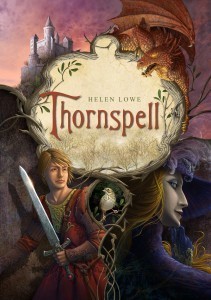 Last Thursday I launched a "Fun With Thornspell" month—basically I told you how I had gotten itchy fingers over my holidays and thought how cool it would be to have some short story fun with the Thornspell characters right here on the blog. And even more fun if you were to tell me the Thornspell character you would most like to have a standalone short story written for, or about—as well as why, based on that character's exploits in the Thornspell story.
Last Thursday I launched a "Fun With Thornspell" month—basically I told you how I had gotten itchy fingers over my holidays and thought how cool it would be to have some short story fun with the Thornspell characters right here on the blog. And even more fun if you were to tell me the Thornspell character you would most like to have a standalone short story written for, or about—as well as why, based on that character's exploits in the Thornspell story.
I also said that I'll be keeping the opportunity going over the next month through until September 1, with a Fun with Thornspell feature every Thursday in which I'll be exploring some aspect of the book from my point of view as the author. And at the end of that time three judges will be deciding on the very best "why" put forward—and I will then write a story for that character and post it right here on the blog, with a personal dedication to the nominator!
Plus if any of the commenters are 1) pupils at either primary/intermediate/secondary school; and ii) enter the name of their school in their comment, they will go into a draw to win one of 3 copies of Thornspell for their school library. So if you're at school or know someone who is, do spread the word.
So that's what we're doing—and there's already a fantastic start on comments and character nominations, with some really great suggestions for possible short stories, on last Thursday's post, here.
On Thursday, I also pointed you to the Thornspell website, where every image conceals a quote from the book. But just to get even more in the spirit, here's a reprise on the video clip of my Thornspell reading at ConText (the National Science Fiction and Fantasy Convention held over Queen's Birthday weekend this year.)
And I hope to do a few more of these for you before the month is out. So keep those character and short story suggestions coming. 



